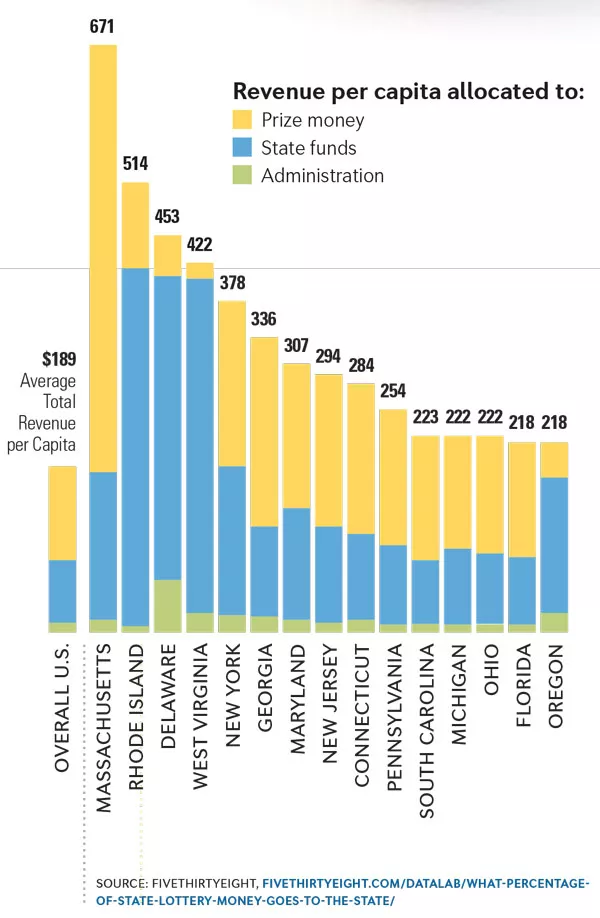Key Takeaways
- Since state lotteries began, many people have been under the impression that state lotteries help fund public services, like public education.
- A credible study finds, however, that today’s state lottery proceeds go toward administrative costs, state funds, and prize money.
- The study also reveals that each state’s use of lottery revenue varies, and a graphic look at that is provided.
At their beginning, state lottery proceeds were used to fund public services. For example, the original intent in North Carolina was to use 100 percent of the proceeds for public education. Today, however, the money has begun to replace—not supplement—existing funds. So, if it’s not used to fund services that benefit the public, where does the money go?
Staffers at FiveThirtyEight, a website named after the number of electors in the U.S. electoral college, which focuses on opinion poll analysis, politics, economics, and sports, followed the money. They found that today’s state lottery proceeds go toward administrative costs, state funds, and prize money.
Since state officials determine where the money goes, the amount directed toward the three areas varies from state to state. Massachusetts tops the list in directing lottery revenue toward prize money, while Oregon funnels the profits to state funds, which are used for economic development, public education, and natural resources. In Pennsylvania, lottery proceeds fund elderly programs. One thing the states have in common? Little of the money goes toward administrative functions, like salaries and advertising.
Here is a look at the top states in prize money.

